|
Nakajima
J1N1 (early) Gekko
by
Ian
Robertson
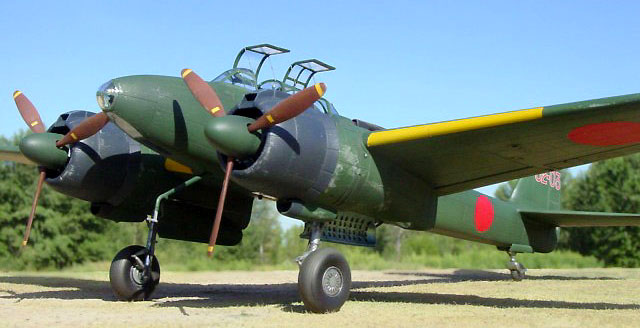 |
|
Nakajima J1N1 (early) Gekko |

Tamiya's 1/48
scale early Gekko is available online from Squadron.com
The Nakajima J1N1 Gekko, code named "Irving", was a twin-engine land-based
fighter introduced by the Imperial Japanese Navy in 1943.
The early version of the fighter featured a distinctive and ungainly
"stepped" upper fuselage. Two upward-firing oblique guns were mounted behind the
cockpit for use against enemy bombers (a similar arrangement to that used by
many Luftwaffe nightfighters such as the Bf.110G-4 and Ju.88G). Some early
Gekkos were also fitted with two downward firing guns for anti-shipping and
ground attack roles; however, these guns were later eliminated because the main
role for the aircraft became defense against bombers.
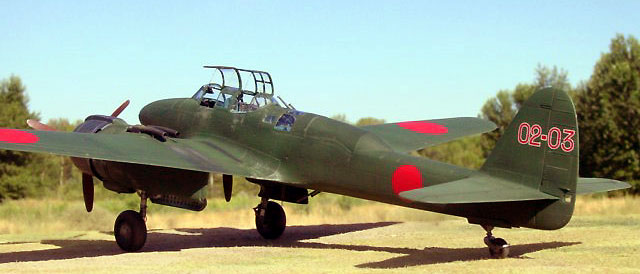
The late version of the Gekko was similar in overall design to the early
version but lacked the stepped upper fuselage and downward firing guns. Tamiya
has released both versions of this aircraft in 1/48 scale, the most recent
release being the early type with stepped fuselage.
The late version of the Tamiya Gekko is the subject of an excellent 3-part
HyperScale construction feature by Gregg Cooper. Because early Gekko is
essentially the same kit as the late Gekko, apart from the stepped fuselage and
downward firing guns, I will defer to the Gregg's articles as a description of
construction. Suffice to say the Gekko fits beautifully and is superbly
detailed.
The only sore point for me was the excessive number of ejector pin marks
located between the framing of the cockpit walls. However, most of these will
not be visible once the model is complete, and those that will be visible can be
dealt with during the early stages of construction.
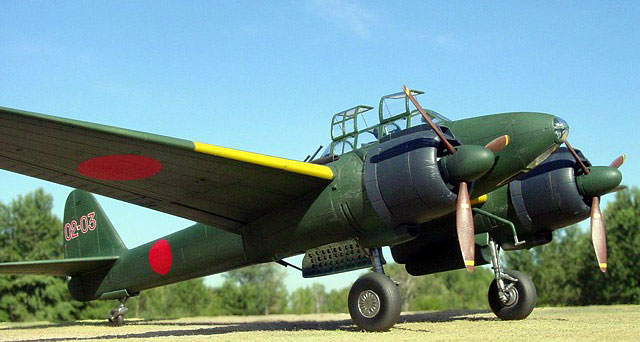
Modifications to my model included etched metal seat belts from Eduard, brake
lines made from electrical wire, and antenna and canopy supports made from
stretched sprue. Bare metal foil was burnished around the landing gear oleos to
give them a more polished appearance. The kit's seats were sanded thin to give
them a more realistic appearance.
I painted the cockpit, gun bay, and wheel wells a light metallic blue-green (aotake)
using Polly Scale "Anodized Metal" acrylic paint.
Control boxes and panels within the cockpit were painted medium green or
scale black, similar to that shown in Part 1 of Gregg Cooper's construction
feature on HyperScale.
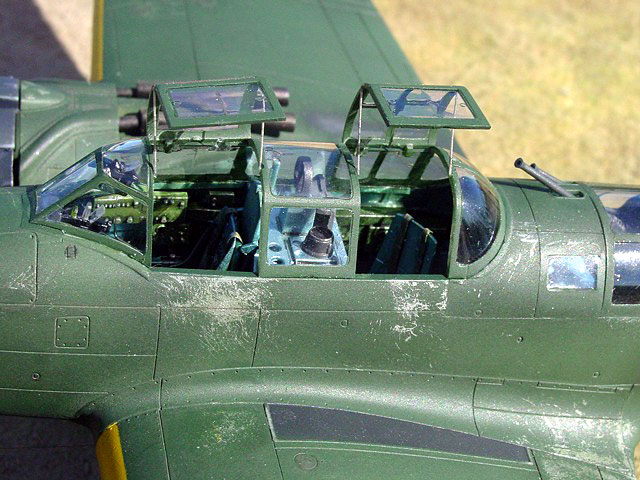
Early Gekkos had two color schemes, IJN Green over IJN Gray, or solid IJN green.
I settled on the solid green scheme for my model. Prior to painting I attached
the one-piece closed canopy as a mask over the cockpit since it was my intention
to use the three-piece open canopy on my model.
The yellow leading edge bands on the wings were painted and then masked until
all other painting was complete. Although the kit contains decals for these
bands I prefer the finish from paint. The kit's decals were used as templates
for the masks.
I sprayed the fuselage and wings with several light coats of SnJ Aluminum
Metallizer and then preshaded the panel lines black. Several coats of IJN green
were sprayed over the model, switching between Polly Scale, Aeromaster, and
Tamiya acrylics. Each brand of green is slightly different in color, giving an
effective and subtle variation to the final finish. The engine cowls were
painted a mixture of black, blue and dark gray using Polly Scale acrylics. The
propeller blades were painted Japanese red-brown.
 The
entire model was sprayed with a coat of Model Master Metallizer Sealer prior to
the addition of decals. I chose decal option "C" from the Tamiya instructions -
an aircraft from the 202nd Naval Fighter Group, Borneo Island, January 1944.
Once the decals had dried I applied a clear coat made from a 1:1 mixture of
Polly Scale clear flat finish and Polly Scale clear satin finish. The
entire model was sprayed with a coat of Model Master Metallizer Sealer prior to
the addition of decals. I chose decal option "C" from the Tamiya instructions -
an aircraft from the 202nd Naval Fighter Group, Borneo Island, January 1944.
Once the decals had dried I applied a clear coat made from a 1:1 mixture of
Polly Scale clear flat finish and Polly Scale clear satin finish.
As a final step, fine grain sandpaper was used to make minor surface abrasions
and expose the SnJ aluminum metallizer beneath, particularly around the cockpit
entrance, port side wing root, and engine nacelles.
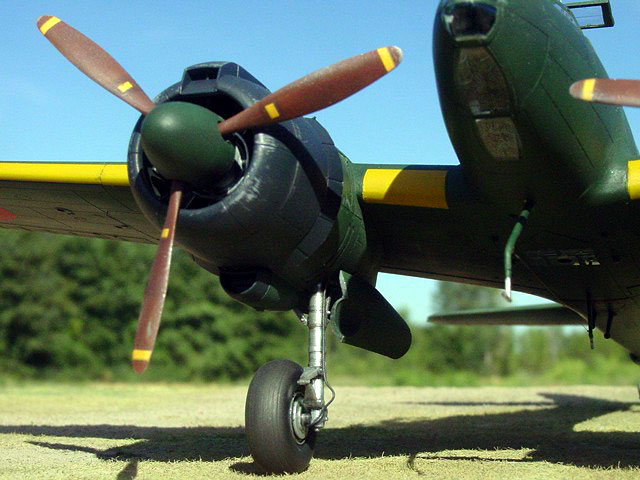
Small amounts of SnJ polishing powder were worked into some of the scratches
in the paint (WARNING - don't get this powder on your fingers, it spreads like
wildfire). Exhaust stains were applied by spraying highly thinned black paint
and then brushing the painted areas with gray chalk pastel. The exhaust tubes
were painted with Model Master "Burnt Iron" metallizer and then brushed with
orange chalk pastel.
For those who balked at purchasing Tamiya's late Gekko because of its
somewhat ordinary (boring to some) appearance, the early Gekko offers a unique
and interesting alternative. This, coupled with the kit's excellent design and
detail, make the early Gekko an attractive option for WWII aircraft enthusiasts.
Highly Recommended.
All images were taken outdoors on a sunny day with a SONY S-75 digital camera
set at its highest resolution (2048 x 1536 pixels).
Other camera settings were as follows:
Images were cleaned up using Adobe Photoshop 6.0 for the Macintosh.
Specifically, the interface between the base and background were merged using
the "blur" tool, and in some cases the "sharpen edges" tool was used to bring
out details on the model that were lost during image compression.
Click the thumbnails below
to view larger images:
Model, Images and
Article Copyright © 2002 by Ian
Robertson
Page Created 15 August 2002
Last updated 04 June 2007
Back to HyperScale Main Page
Back to Features Page |
Home
| What's New |
Features |
Gallery |
Reviews |
Reference |
Forum |
Search